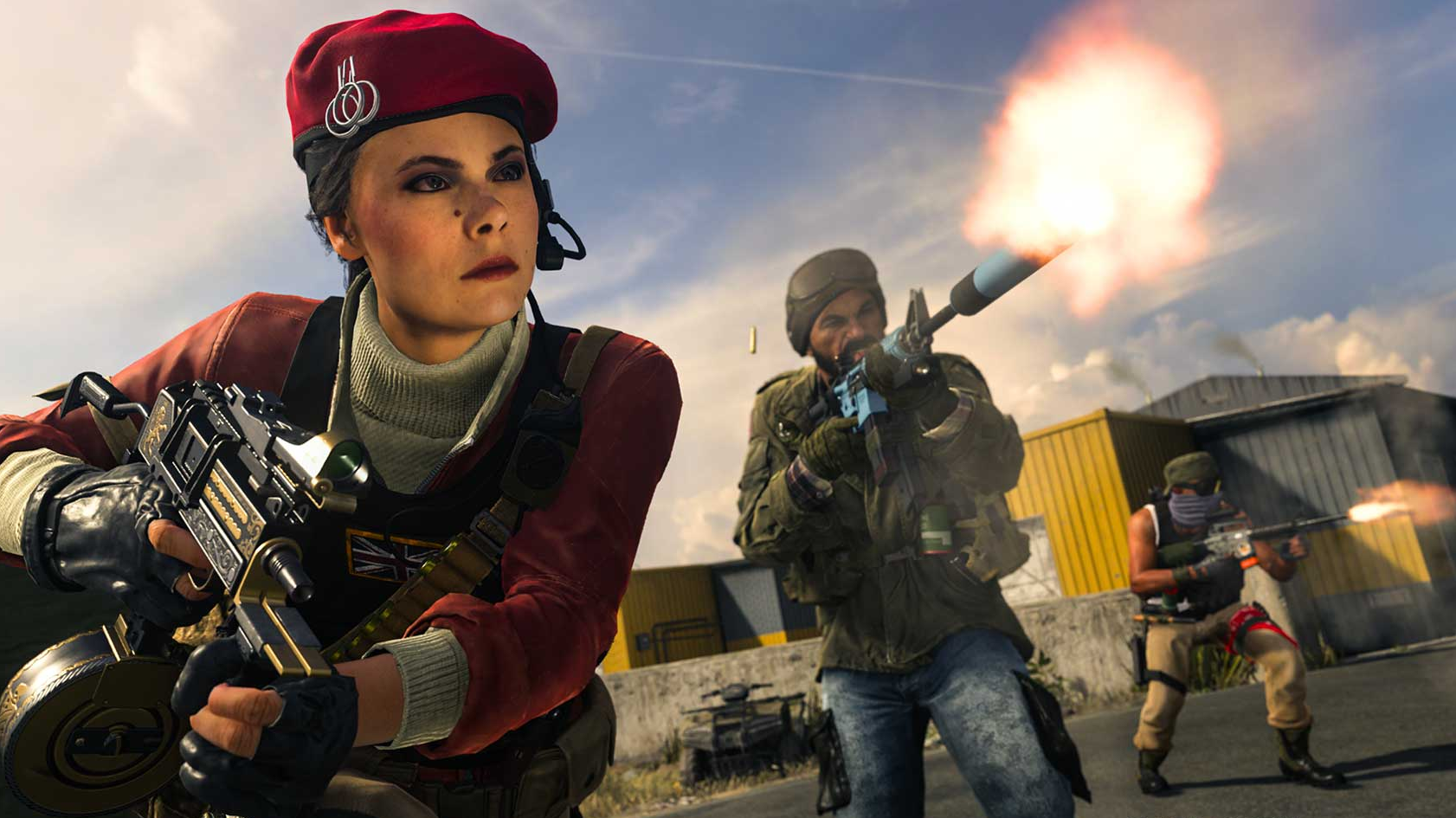Call of Duty: Cold War helped me get over kill/death ratios and fight for the team
Scorestreaks, not gorestreaks.

Call of Duty has always been the game you could play together, but alone. Join a deathmatch and you get the frisson of competing with fellow human beings, and in team modes the sense of fighting in a squad, clearing rooms and delivering harsh reprisals on behalf of downed comrades. But outside of Warzone, there’s never been any real need to communicate. Classic COD’s snaking routes and constant movement mean that, even if you log in with a friend, you’ll struggle to stick together—instead occasionally passing each other in the corridors.
There’s a huge positive that comes with this setup: convenience. If you’re grabbing 15 minutes of escapism after putting the kids to bed, you don’t have to try and summon a crack team of acquaintances, all of whom have their own conflicting schedules to juggle. Playing COD is less like maintaining a weekend five-a-side team—looking at you, Destiny 2 and Sea of Thieves—and more like flicking through a few pages of an airport thriller before you go to sleep.

The downside, however, is the solo mindset instilled in players. In many ways, that’s reinforced on the developer side by the way the game keeps score. Last year’s Modern Warfare, for instance, can’t resist patting players on the back for murders, even during objective-based modes in which the killing is supposedly peripheral, a means to an end.
In Domination, the goal is to capture three control points on the map. With that in mind, who do you think would be scored highest: the player with four captures and a kill/death ratio of 1.5, or their teammate with nine captures and a k/d of 0.5? The latter, you would think, has stuck closer to the spirit of the mode. But no, they come in second. When two standard kills net you 200xp—the same as a capture, which is a much tougher proposition—it’s no surprise players would plump for the easy kills.
There are more extreme examples. In one recent Modern Warfare match, I faced an ultra-close-range specialist who moved so fast they were only distinguishable by the bodies thudding in their wake. They racked up 42 kills in total, a fairly extraordinary number of notches. But they did so by completely ignoring the hardpoints they were supposed to be defending, and their team very nearly lost. Problem is, that failure wasn’t reflected in their personal score, which placed them at the very peak of the leaderboard. What incentive was there for that serial noscoper, high on XP fumes, to contribute? Their selfishness was rewarded.
Having played in this context for so long, I’m as guilty as anyone for habitually checking my k/d throughout a match, fighting to equalise it rather than prioritising the team’s shared objective. But since moving over to this year’s COD, Cold War, I’ve noticed my thinking start to change. Why? Because the metrics have changed too.
Check your combat record in Cold War, and you’ll find your match wins and losses displayed prominently on their own pie chart. By contrast, your kill/death ratio is given a single line in a list. That’s a reversal of the way Modern Warfare did things. Similarly, the after-action report that pops up in the wake of each fight forces you to scroll through graphs for score-per-minute, score, objective, and damage before you get to your k/d. Everywhere I look, Treyarch is telling me that the objectives matter most of all.
Keep up to date with the most important stories and the best deals, as picked by the PC Gamer team.
Play Domination, meanwhile, and you’ll notice that it’s 50 points for a kill, but 200 for capturing an enemy position—better reflecting the supposed focus of the mode. And killstreaks, as they’re called in Modern Warfare, are now scorestreaks, rewarding team players with just as many toys as the stab-happy killers.

There are still frustrating outliers, like my teammate who somehow acquired 10,955 points without spending a single second on the hardpoint in Nuketown. But Treyarch clearly knows that its measurement for success influences player behaviour. If the change in myself is any indication, the new yardstick will lead to more players treating COD like a sport, rather than a spree.
Whether that change will stick is another matter. At the time of writing, Modern Warfare is running a playlist called ‘What Objective?’, which features variations on Domination and Hardpoint that can be won purely through kills. Perhaps when it’s Infinity Ward’s turn to release a new entry in the series, the paradigm will reset. But for now, I’ll enjoy working with my team, rather than simply sating my bloodlust.
Jeremy Peel is an award-nominated freelance journalist who has been writing and editing for PC Gamer over the past several years. His greatest success during that period was a pandemic article called "Every type of Fall Guy, classified", which kept the lights on at PCG for at least a week. He’s rested on his laurels ever since, indulging his love for ultra-deep, story-driven simulations by submitting monthly interviews with the designers behind Fallout, Dishonored and Deus Ex. He's also written columns on the likes of Jalopy, the ramshackle car game. You can find him on Patreon as The Peel Perspective.

